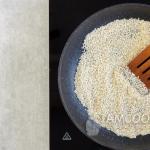Nowadays, when technological progress does not stand still, a large number of country property owners are abandoning traditional heating systems in favor of more innovative ones.
One of these heating systems, which has already been tested and shown to be effective, is IR heating.
Infrared heating of a home is far from a new technology, but at the same time innovative, as it is an affordable and effective way to heat a property. The basis of such heating is the power of nature, because all devices for infrared heating use the same principles as the Sun - it is not the air itself that is heated, but directly the surface of the room.
Heating with infrared rays: features
In itself, infrared heating of a country house, although technically complex, is still characterized by increased productivity. Due to the high power of the heaters themselves, as well as the innovative method of heating the air in the room (first the walls, furniture, floor and ceiling receive heat, and only then the air), it is possible to achieve not only high quality work, but also significantly reduce the cost of heating .
It should be noted that due to the absence of absorption by the air of heat emanating directly from the device itself, it is possible to eliminate energy losses. Thus, there is no irrational temperature distribution, and therefore the efficiency of IR heaters is an order of magnitude higher than that of the same batteries or air heating devices. Energy savings amount to 70%, which significantly affects the cost of heating and allows you to save money.

Floor-standing IR heaters for a country house
The instructions for heating devices using this technology also indicate that they can be used for spot or zone heating of a room. By the way, this is the only type of heating equipment with similar characteristics.
Design of IR heating devices
Today, all infrared devices for heating a country house presented on the domestic market have a single design. The main structural element of such equipment is a heating element (as a rule, several heaters are used).
The design also uses aluminum alloy plates, which can heat up to 250C and emit electromagnetic waves in a certain range. It should be noted that the body of the IR device does not heat up above 80 C, and therefore they can be safely installed in any room, without fear of sudden fire or accidental burns.
Installation of a heating system with IR heaters: preliminary work
Before starting any work and heating a country house with infrared heaters, you need to collect some information:
- The area of the house where it is planned to install an infrared heating system. Be sure to take into account the size and number of window openings and doors;
- Thermal insulation coefficient of the house (determined using special reference books, depends on the material from which the building is constructed);

- The total power needed to heat the entire house.
If you do the installation of devices yourself, it is important to check the maximum voltage in the electrical system of the house. The indicators should be within 220-230 V - otherwise you need to take care of purchasing stabilizers, because IR devices are sensitive to voltage fluctuations.
In addition, you should select rooms that will be heated. As a rule, infrared heating is used for a certain number of rooms where the highest efficiency and productivity can be achieved - living room, kitchen, hallway, bathrooms and utility rooms. For all these rooms, 6-8 heaters will be enough.
Advice. When choosing equipment and calculating it, you need to take devices “with a reserve” of power. This can be useful if one of the panels fails (others will take on its load).
Infrared heating equipment: how to install correctly
Installing infrared heating is a process that requires a certain sequence and knowledge of the features. For example, installation of equipment must be done at a certain height (this can be seen in the photo and video on our website) and for each heater the parameters will be different.

IR heaters installed in the living room of a private house
The norm is considered to be 2.2-3.5 meters from the floor - with such indicators the highest productivity is achieved. It should be noted that IR equipment should be mounted at a height of at least 0.5 meters from a person’s head, and such a heating system should not be installed above furniture.
In order to ensure the most optimal room temperature and save a lot of money, it is important to perform a load balancing process during the installation of IR systems. Its essence lies in managing equipment, in particular, the load on the system.
It is planned to install special automation devices in the heating system that control operating modes and load on the entire system.
Advice. There are no difficulties during the installation of IR equipment. The main requirement is compliance with electrical safety measures prescribed by the equipment manufacturer.
Advantages of such systems
The use of infrared technology for heating a country house has many advantages over more traditional heating systems.
Among the most important advantages are:
- Low price of heating itself. Despite the slightly higher cost of the equipment itself, heating the room is cheaper than using water or;

One of the types of floor IR heaters
- Versatility. IR devices are effectively suitable for heating absolutely any room in a country house, from living rooms to bathrooms and storage rooms. There are practically no restrictions;
- IR heaters do not burn oxygen in the room, do not create vibrations or noise. As a result, it is very comfortable to be in such a room, even after long-term operation of the heating system (this cannot be said about traditional heating);
- Duration of trouble-free operation. Many equipment manufacturers claim that infrared heating of a country house will last at least 20 years and will not lose its performance, reliability and safety;
- Fast heat transfer. Unlike most heating systems, IR devices begin to transfer heat immediately after switching on, which allows you to heat a room of any size in just a few minutes;
- No need for expensive installation and maintenance. Equipment installation and maintenance can be performed even by a person without specific qualifications. It is enough just to study the instructions and take into account the requirements of the manufacturers;

- Effective automation of equipment operation without extra costs and complex work. Without any problems, you can install various devices into an infrared heating system, thanks to which the operation of the system will become more productive and of higher quality, and it will be possible to reduce costs.
Types of IR emitters for heating a home
Various companies offer domestic consumers a wide range of infrared devices designed to heat a country house. Basically all type devices, but you can also find wall-mounted and floor-mounted devices. As a rule, in most cases the fuel is electricity, but there are also gas equipment (industrial devices).
The most innovative IR heaters are the so-called picture heaters. This is not only equipment that allows you to effectively heat the air in a room, but also a stylish element of interior decoration that will fit into any room. Such devices consist of heating carbon filaments that operate without overloads or overheating.
Bottom line
Infrared heating of a home is the most economical, practical and reliable way to ensure effective heating of any property, regardless of size. A large selection of heating devices, affordable prices and ease of installation make IR technology an affordable and very profitable alternative to traditional heating.
Today, many consumers are interested in such a heating system as infrared innovative heating of a private residential building. Many people have no idea what kind of heating this is, what advantages and disadvantages it has.
In this article, everyone will be able to find answers for themselves and learn a lot of new information.
Infrared heating - what is it?
Heating with infrared radiation is a very complex process.
Infrared heating of a private residential building is a complex but effective process. Its operating principle is based on heating elements that radiate thermal energy to surrounding surfaces, such as the floor, walls, furniture.
They heat up and, accordingly, give off their heat to the air. You can compare heating using infrared radiation with ordinary light - this is the best analogy.
The technology of such heating is unique in that the air does not absorb energy from the device, there are no special losses during the heating process, since the energy freely reaches the desired heated surfaces, and, of course, people directly in the operating area.
All infrared heaters are those heating elements that allow you to avoid temperature distribution in an irrational manner.
After all, warm air, when it rises to the ceiling, changes places with cold air. This happens because it is not the air itself that is heated, but the solid surfaces of objects.
In this case, there is no excessive heating of the air, the temperature of the ceiling and floor is equalized, saving energy up to 70%.
It is worth noting that infrared heaters are considered the only type of heating that can provide spot or zone heating.
Infrared heating of a country house
Today, many consumers do not know which heating system to choose. Experts believe that infrared heating of a home is a modern and thoughtful solution, because such a system has many advantages.
What needs to be done to install such heating?
First of all, in order to begin the process of installing an infrared heating system, you need to have all the necessary information about such parameters as:
- The area of the house in which the system will be installed. That is, you need clear dimensions of the rooms, their number, and also do not forget about window openings.
- You need to have an idea about the insulation of the whole house.
- It is necessary to pay attention to how much power is allocated to the building.
Before installing the system, it is advisable to check the maximum voltage in the electrical network at home. It's very easy to do. To do this, you need to turn on as many electrical appliances as possible, and while they are operating, measure the voltage in the home network. Indicators should range from 220 to 230V, the permissible deviation is only 10-20%.
Therefore, if you notice that the deviation is greater than the permissible norm, you should use voltage stabilizers in such a house. Next, you need to take a house plan; if you don’t have one, then you need to draw one up, and then calculate the infrared heating, in particular the system.
First of all, you need to note which rooms will be heated. Usually the following rooms are selected:
- kitchen-living room;
- bedroom (there may be several);
- bathroom (bathroom and toilet);
- hallway;
- storage room or utility room.
For approximately all of these rooms you will need from 6 to 8 heaters.
How to install infrared heaters correctly?
For those who want to install an infrared heating system, you need to remember that such heaters should be mounted at a special height.
Each heater has its own height. The norm is 2.2 – 3.5 meters from the floor. Particularly important is the fact that heaters cannot be installed less than 0.5 meters from a person’s head. That is, if a person’s height is 1.9 m, then the minimum height for hanging equipment should be 2.4 meters.
To slightly reduce the impact, and constant impact, on a person’s head, it is recommended to move the heaters slightly to the side. This means that it is not necessary to mount the heater directly above your head; it can be moved slightly to the right or left.
It is very difficult to heat a large room with just one heater, so it is recommended to install several at once. A common mistake is installing heaters near a window.
This leads to large heat losses. Also, experts do not recommend installing infrared heaters on ceilings made of PVC components.
When installing, you need to be careful and maintain the minimum distance between the surfaces and the infrared heater.
Load Balancing
Load balancing is a special automated process, the essence of which is that you can control infrared heaters, in our case, the load on the system itself.
Management can take place according to various parameters, there can be many options - which one to choose is decided by the consumer himself.
Below is an example of the use of heating devices. The basic principle of load balancing is that heaters should operate no more than 20 minutes per hour.

Scheme of infrared heating operation. Click to enlarge.
This is the time that is considered optimal, provided that the building has normal thermal insulation. The heater should be turned on no more than 20 minutes per hour in order to maintain the optimal temperature in the room. Peak load should be no more than 1.8 kW.
The main material that will be needed for installation of the heating system itself is a box - the wire is laid in it. If the consumer makes a hidden installation in the wall, then corrugation is needed; If we are talking about a wooden house, then you can use both a box and a corrugation.
The wire for thermostats and heaters should be taken with a cross-section of 1.5 - 2.5 square meters. mm - it all depends on the load. It is worth noting that it is necessary to provide a general automatic machine, the function of which will be to turn the heating system on and off.
It is very easy to do infrared heating with your own hands, especially when it comes to installation. You can independently lay the wires, as well as install and connect heaters and thermostats.
The main thing is to follow safety measures. Installing infrared heating is not a very complicated process; it can be done without special skills.
The main thing is for the average person to understand the operating principle of the system and the features of using such heaters. If there is no experience in such work and a person is not confident in his abilities, it is better to invite specialists who can competently, quickly and efficiently perform any work.
Infrared heating - pros and cons
Today, infrared heating is considered the most economical type of electric heating (40% savings). Using this method, the consumer does not burn oxygen, and this is the first advantage.
During the construction of a house, the project necessarily includes a boiler room, that is, a system of radiators and pipelines that runs through the entire house.
However, if you install good thermal insulation or build a so-called “passive house”, you can save significantly, since infrared innovative heating of a private residential building will be an effective and inexpensive type of heating.

Currently, infrared heating is the most economical of the electrical types. Click to enlarge.
If the house is built, however, with a different heating system, then an inexpensive infrared heater will be an effective and economical addition to the existing heating.
Many consumers prefer to purchase and install infrared heaters. This is not surprising, because they are considered the best and have the ideal price/quality ratio.
It is worth remembering that heaters should never be covered. The only significant disadvantage of this equipment is the fire hazard.
Infrared heating is a modern method of heating the sun, because the operating principle of the design is based on heat rays.
The operating range of this heating is from 5 to 15 square meters, it all depends on the power of the heater.
Some researchers claim that infrared heaters have only positive effects on human health.
There are methods that are based on the fact that the prevention and treatment of colds is carried out using infrared saunas.
The advantage of IR equipment is the fact that it is mounted on the ceiling, which means it does not take up the necessary and useful space, and has practically no effect on the arrangement of furniture in the room. Also, if a family with small children lives in the house, there is no need to worry about the kids - it is simply impossible to get burns.
The operating principle of such equipment is not to heat air, but to heat various surfaces - tables, floors. Staying in such a room becomes pleasant and comfortable. It is worth noting that the heaters operate silently, they do not make noise, they do not smell at all, and most importantly, they do not burn out the air.
If we talk about heat loss, then it is only 5-10%. Infrared heaters, if desired, are equipped with a special thermostat - this helps maintain a constant air temperature.
In addition, the heat in the room remains at the same level for a long time after the device is turned off. Infrared heating, which is quite possible to install with your own hands, is used not only for private and residential buildings, it is very often used in production.
It can be either primary or auxiliary. For example, you can heat cottages, living quarters, verandas and outdoor gazebos with ceiling heaters. Only the area needed by the consumer is heated.
Such equipment is not afraid of moisture - this is another advantage. Installation and dismantling of equipment is very simple, such equipment is easy to transport and move.
Heating systems in our latitudes, where temperatures in winter sometimes drop to 30 degrees and below, play a decisive role. While city residents do not have much choice due to the existence of a centralized heating system, owners of individual houses have more degrees of freedom when choosing the principle of heating their homes. Among other options for creating a comfortable thermal regime, infrared (IR) heating systems are undoubtedly popular, providing uniform heating of the room and allowing for economical energy consumption. However, there are some features of arranging an infrared heating system for private houses, which we want to tell you about.
The main difference between the infrared principle of home heating and the traditional water heating principle is that it is not the air in the room that is heated, but planes and objects. It is they who then release the accumulated heat, creating the necessary temperature balance in the heated zone. Thus, there is no displacement of cold air masses by warm ones, as well as a natural concentration of heated air under the ceiling of the room. The room is heated evenly - the air temperature is the same throughout the entire height of the room. What is important is that infrared heating of a private home is an energy-saving solution and allows you to save about 50% of electricity compared to other home heating options.
Types of infrared heating
Ceiling infrared heating systems
With ceiling-type infrared heating, heating devices are suspended from the ceiling - due to this, the heat flow is directed downward and slightly to the sides. Thus, the main surface that is heated by IR rays is the floor covering. Therefore, the temperature at the level of a person’s feet with this heating method is a couple of degrees higher than at the level of his head. With the convective principle of air heating, the floor is always the coldest surface, and the bulk of the warm air “lives” under the ceiling.
Good to know! Structurally, a ceiling infrared heater includes a heating element (heating element) and a reflective aluminum plate that emits electromagnetic waves of a certain length. Heating elements are made of tungsten, quartz or ceramics - the power and efficiency of the entire heater as a whole depends on the material used.
Quite often, ceiling heaters are used as an auxiliary heat source in a private home. By maintaining the background temperature in the room using another type of heating and using ceiling IR heaters, you can create “islands” of heat, for example, in a recreation area, workplace or dining area. Please note that this does not take away any useful area of the room.
Using infrared ceiling-mounted heaters, you can heat the room both in full and zoned
Having a built-in temperature sensor, the IR heater will turn off when the set temperature is reached and will turn on heating if the room temperature drops below the set point. Thus, a considerable amount of electricity is saved. Heating with ceiling-type infrared heaters is also good because the heating devices can be dismantled and transported, say, to a new place of residence.
Infrared film heating can be successfully installed in the ceiling space of a private house, which will allow the height of the premises and the area of the living space to remain unchanged. This is especially important on attic floors with a sloping ceiling and small wall planes. More recently, a new type of infrared ceiling panels mounted in an Armstrong-type profile has appeared on the finishing materials market - a simple and economical solution for common areas in a private home.
Important to know! Directional flow of infrared radiation must be avoided. The heating device must not be directed towards the person’s head. It is not recommended to mount infrared heaters on a suspended ceiling made of PVC film or on plastic lining, and also to place them below 1.5 meters from the floor surface.
Wall-mounted infrared heating systems
Installing wall-mounted infrared heating panels can be a good alternative to traditional heating using radiators. Having a small thickness and a wide variety of standard sizes, IR heating panels can be easily installed in a private home by yourself.
Panel-type infrared heaters can be an excellent alternative to a traditional water radiator
Infrared panel heaters are available in the form of:
- wall-mounted IR panels installed instead of a conventional radiator in a niche under the window;
- designer wall infrared panels of various sizes and in a wide range of colors;
- strips of warm infrared skirting boards, which are attached around the perimeter of the room instead of a regular skirting board.
A universal option for wall heating is a film heating system mounted in the thickness of the wall. It is rational to install this type of heat source inside a room with one or more external walls - this will ensure sufficient heating of surfaces prone to freezing and mold formation. An important point that you need to pay attention to when installing an IR film system is the mandatory use of a shielding film that prevents heat loss.
Floor infrared heating systems
Film mats are used as floor IR heating systems, into which flat heating elements connected in series are sealed. The minimum thickness of this heating system allows you to install a warm floor under any finishing coating - be it tiles, laminate, carpet or linoleum. In this case, not a single centimeter of room height will be lost. The most effective combination of infrared heating in terms of heat transfer is with ceramic tiles, a little worse - with laminate. The greatest shielding of infrared radiation was observed behind linoleum and carpet.
The infrared film heating system can be mounted on the floor, walls and ceiling
In addition to the listed advantages, installation of infrared film is carried out quickly and is not accompanied by dirty work, as, for example, when installing a water-heated floor. Installation of decorative flooring can be done right away, without the numerous steps that accompany the installation of other types of heated floors.
Important to know! When installing infrared floor heating, it is not recommended to lay film under furniture - this will reduce heat transfer and can cause drying out of wooden and wood-chip furniture structures.
Advantages and disadvantages of IR heating
Like any system for creating comfortable living conditions in a private home, heating rooms using infrared radiation is not without its positive and negative sides.
Advantages of arranging heating in a house using infrared radiation:
- Infrared radiation is similar to solar heat and does not disturb the healthy microclimate in the room - it does not dry the air and does not burn oxygen. In addition, due to reduced air circulation with infrared heating, dust particles are not transferred as intensely as with a convective heating system. There are studies that mid-wave infrared radiation has.
- IR heating can be used zonally, in combination with another home heating system, or act as an autonomous heat source.
- Film heating systems based on IR heating elements are perfectly combined with floor and wall decorative coverings.
- The low inertia of the infrared heating system means that it does not require time to “start up”, like a water coolant. Heating of the room begins immediately after turning on the IR system and allows you to combine it with thermostats.
- For an infrared heating system, voltage drops in the central electrical network are not critical, which allows us to speak about the high reliability and durability of heating with infrared radiation.
- When using a floor or wall heating system, you can lay IR film only on 50-60% of the room area in order to achieve a comfortable temperature in the room.
- Installation of infrared film and IR heaters can be easily done on our own, as it does not require specific knowledge or skills.
- Due to the modularity of film infrared heating, failure of one segment of the film does not entail complete incapacity of the entire heating system. Replacing a faulty element of a film heated floor is quite simple and does not require installing a new heating strip.
- The electricity consumption of the IR heating system is about 50 W/m2 per hour.
Infrared heaters create a comfortable indoor microclimate by uniformly heating nearby surfaces, which then release heat
Despite the fact that infrared heating has many advantages, one cannot fail to mention its disadvantages:
- Be that as it may, the principle of infrared heating is based on electromagnetic radiation, which does not always have a positive effect on the human body. In addition, static electricity accumulates on heating surfaces, which can attract dust.
- Despite the cost-effectiveness of IR systems, it is initially necessary to invest a significant amount in equipment, which will pay for itself in a few years.
- If zone heating with infrared radiation costs little money, then the use of heating with infrared radiation as the only source of heat can result in an unaffordable amount of money during operation.
- There is an opinion that excessive heating of surfaces in a room by infrared radiation can negatively affect the operation of household electrical appliances.
To summarize all of the above, it can be noted that an infrared heating system can become a rational, economical, quickly installed option for both main and zone heating for a private home.
Infrared heating is one of the home heating systems. Used both the main and auxiliary methods of heating a home.
Since thermal energy is not dissipated in the surrounding space and reaches people and objects directly. Infrared heaters are called “direct heating devices.”
Infrared heating at home
Infrared heating is gaining more and more popularity these days.
Operating principle

IR radiation is based on electromagnetic radiation, similar in physical properties and qualities to the sun.
The device consists of two layers:
- metal, carbon or quartz layer, acting as a heating element, the material affects the heating power;
- aluminum foil, heating up from the metal and giving off heat to the surrounding space.
Both layers are hermetically sealed into a dielectric that emits waves.
Modifications of infrared heaters:
- Film— heated floors are installed only with film.
- Panel- installation of ceiling, floor, and walls.
An electric current passing through a heating device is converted into heat waves with a frequency 9 µm, which heat surrounding objects and planes along their path. At this time, there is no displacement of cold air and no concentration of warm air above: the entire room is heated evenly.
Pros:
- economical - saves money compared to other types of electric heating up to 50% electricity, service life up to 25 years;
- quick heating of the room;
- preservation of area;
- easy installation;
- ease of control;
- quiet operation;
- environmental friendliness - promotes the disappearance of fungus, dust, does not dry out the air;
- safety - heaters are installed in damp rooms;
- allowed even when heating verandas and summer verandas.
Cons:

- high price of equipment;
- duration of heating of large rooms;
- prohibited use in rooms with ceilings below 2.5 m;
- high cost of creating key conditions for effective work: insulation and waterproofing of the house, creation of heat shields;
- low mobility;
- maintaining the required distance to objects;
- the likelihood of getting burned if you are too close to the heater;
- low temperature control range;
- smell from heated objects.
Types of IR heating
Differ by:
- Energy source:
- electrical;
- gas;
- electric gas.
- At the installation location:
- ceiling;
- wall;
- floor
- By wavelength:
- Shortwave- for small rooms, with ceilings up to 3 meters, temperature up to 600 °C.
- Medium wave- average area, ceiling height from 3 to 6 meters, temperature 600–1000 °C.
- Long wave- for large spaces with high ceilings from 6 to 8 meters, heating temperature 1 thousand °C.
Ceiling heaters
Heating devices are mounted on the ceiling - infrared radiation diverges slightly to the sides and goes to the floor, the main heating surface. Because of this the temperature at the floor is higher than at the walls or ceiling.

Photo 1. Infrared ceiling heater for heating a house. The device is similar to a regular lamp.
Peculiarities
- the radiation diverges in a cone, capturing maximum space;
- fasteners allow you to choose optimal direction of radiation;
- can act as a “heat gun” when installed near windows or doors;
- ceiling panels imitate designer coatings.
Attention! When connecting several devices, maintain parallel connections, and install a separate circuit breaker in the panel, to avoid overload.
Distance from heater to ceiling at least ten centimeters.
Heating with infrared film
Warm floors mounted only with film mats. Flat heating elements connected in series are sealed into the dielectric.
Matami the floor is covered under the finishing coating or mounted on the ceiling. The emitted waves heat the opposite surface and objects.

Film heaters are different several advantageous features:
- the minimum thickness of the film mat does not eat up a single centimeter of area;
- any finishing coating is laid on it;
- installation can be carried out independently without special tools;
- safe.
You might also be interested in:
Installation
Installation of film coatings requires the fulfillment of several conditions:
- Ideally level base. Before installation, it is necessary to carry out work to level the hydro- and thermal insulation of the base.
- Infrared bands laid with a gap of 0.5-1 cm to a space free from furniture and connected to each other with thermal insulating tape. From the wall the mats recede no less than ten centimeters.
Important! Heating strips can only be cut according to special markings. These places are covered with bitumen insulation, which comes with the floor.
- bend heating elements more than 90 degrees is not allowed;
- connect infrared strips in parallel copper multicore cables not less than 1.5 mm. sq. sections;
- on the wall for temperature control The thermostat is hanging, and a heat sensor is placed under the mat in a special recess;
- After installation, start-up work is carried out so that check serviceability mat.
The sensor is placed on thermal insulation, otherwise it will not show the real base temperature.
Reference. The area with film mats should be not less than 70% for heating efficiency.
Wall-mounted thermal IR panels
Infrared panels mounted on the wall with special brackets And heat the opposite wall and objects, located in the path of thermal waves.

Photo 2. Infrared thermal panels installed around the perimeter of the room. The appliances serve as the main source of heating.
Peculiarities
- Panels combine the properties of emitters and convectors.
- The heater is made of metal ceramics. In this case, the device is a solid panel with a connected cable.
- Wall panel models equipped with thermostats.
- Quartz panels after switching off retain heat for a long time.
- Quartz heaters replacing central heating in garages.
Infrared heating using baseboards
Infrared skirting boards or “warm skirting boards” - a type of wall-mounted infrared heaters.

Photo 3. Infrared baseboards for additional heating of the room. The appliances warm up the floors well.
Behind a special aluminum profile imitating a plinth is laid carbon-based fin heating element. Heat rises by natural convection.
Peculiarities
- warm baseboard is a low-power device, so it is used only as an additional means;
- skirting boards heat the floors and part of the walls;
- dries the walls, eliminates fungus and mold;
- when placed on walls in special boxes - avoids injury from furniture, the laying area is not limited by free space.
Gas infrared heaters
Autonomous type of equipment that does not require electricity. This feature makes gas IR heaters suitable for places where there is no electrical connection or where there is a possibility of power surges. Heats up up to 800 °C, and quickly heats the area up to 60 squares. For work Requires propane or natural gas in cylinders.

Gas IR heaters are not intended for constant heating of a home.
Species:
- Ceramic— a ceramic plate is used as a heating element. The gas cylinder is located in the metal base of the device. Most often used in dachas, gazebos and outdoor establishments.
- Catalytic- uses both gas and electricity for operation. It is based on the principle of oxidation of substances. Used for heating residential and industrial premises. This is a safe look.
- Street— designed for heating terraces, sports and playgrounds, cafes in the form of an open umbrella with a heating radius of six meters. Gas cylinders are located inside the heater.
Operating principle
Same as electric ones, only gas is used:
- in the heater chamber gas mixes with air;
- the mixture passes into the holes of the ceramic plates and burns, heating the ceramics;
- heated plates emit heat waves.
Peculiarities:
- Availability of a built-in sensor for monitoring the concentration of carbon dioxide in the air. When the level is 1.5% will be exceeded, the sensor will turn off the heater.
- The room is periodically ventilated.
- If large-sized heaters are used, then it is necessary to additionally equip the room with a chimney.
Using infrared radiation to heat your home is a relatively new heating option that was first used in the 1930s. Currently, the range of infrared heaters has been replenished with effective, economical models, the result of which is the rapid heating of the room without air convection.
Infrared heating is becoming increasingly popular. Infrared radiation sources are easy to install, have a good design and are affordable.
There are several heating systems available on the market that use infrared radiation: 
- ceiling system;
- wall system;
- floor system.
Each option is different in design and also has specific features that you need to learn about before planning to heat your home with infrared heaters and panels.
Ceiling system - reasonable and inexpensive home heating
 High-quality infrared heating, the pros and cons of which will be discussed in this article, can be implemented using a ceiling heating system. As the name suggests, the installation of system elements is carried out on the ceiling space, and the heat flow is directed to the floor. Therefore, the floor surface temperature will be several degrees higher than the air temperature. Such conditions are quite comfortable for most ordinary people, because with conventional hydraulic heating using radiators it is quite difficult to solve the problem of cold floors. Infrared heaters are very often used for...
High-quality infrared heating, the pros and cons of which will be discussed in this article, can be implemented using a ceiling heating system. As the name suggests, the installation of system elements is carried out on the ceiling space, and the heat flow is directed to the floor. Therefore, the floor surface temperature will be several degrees higher than the air temperature. Such conditions are quite comfortable for most ordinary people, because with conventional hydraulic heating using radiators it is quite difficult to solve the problem of cold floors. Infrared heaters are very often used for...
Let's look at the design features that distinguish infrared heating lamps installed on the ceiling. They consist of the following functional components:

 For an infrared ceiling heater to create heat, the system produces electromagnetic waves, which are converted into thermal energy. Moreover, the heating efficiency depends on the type of material used to produce the heating element. Tungsten, ceramic and quartz heating elements have proven themselves well.
For an infrared ceiling heater to create heat, the system produces electromagnetic waves, which are converted into thermal energy. Moreover, the heating efficiency depends on the type of material used to produce the heating element. Tungsten, ceramic and quartz heating elements have proven themselves well.
Infrared ceiling heating systems have a number of special advantages:

Flaws:

Wall heating systems - a combination of efficiency and economy
 The high efficiency of infrared heating makes property owners pay attention to wall-mounted heating systems. Such a system will be a good alternative to traditional heating. Currently, wall-mounted infrared heating radiators are presented in the form of radiators, baseboards and designer panels and plan systems.
The high efficiency of infrared heating makes property owners pay attention to wall-mounted heating systems. Such a system will be a good alternative to traditional heating. Currently, wall-mounted infrared heating radiators are presented in the form of radiators, baseboards and designer panels and plan systems.
A characteristic feature of wall-mounted units is their easy installation.
Therefore, even a beginner who has no experience in connecting traditional heating devices - gas boilers, pipelines and radiators can make infrared heating with their own hands. To install the device, just select a place in the apartment, drill the brackets and hang the infrared heater in accordance with the instructions.
 The plan heating system can be used as wall heating, reviews and prices of which are posted on thematic forums. Such a system is mounted in the thickness of the wall. To install, the owner will need infrared heating film, the price of which is about 1,200 rubles per square meter. Today, many homeowners are still not familiar with new technologies and often ask the question: heating plan, what is it and how does it work?
The plan heating system can be used as wall heating, reviews and prices of which are posted on thematic forums. Such a system is mounted in the thickness of the wall. To install, the owner will need infrared heating film, the price of which is about 1,200 rubles per square meter. Today, many homeowners are still not familiar with new technologies and often ask the question: heating plan, what is it and how does it work?
 The answer is as follows - the plan heating system, the price of which is about 15-17 dollars per square meter, is a low-temperature film heater. It can be used for heating apartments, country houses, industrial buildings and offices. It is especially effective to place infrared film heating on external walls that are prone to local freezing and the formation of fungi.
The answer is as follows - the plan heating system, the price of which is about 15-17 dollars per square meter, is a low-temperature film heater. It can be used for heating apartments, country houses, industrial buildings and offices. It is especially effective to place infrared film heating on external walls that are prone to local freezing and the formation of fungi.
For owners who are interested in a plan heating system, reviews will help them form an objective opinion about the rationality of using such heating in the house. It's also worth exploring the strengths and weaknesses of wall-mounted infrared heaters.
Advantages:

- long service life;
- automated work process;
- minimal maintenance costs;
- low heating costs per square meter of area;
- attractive body.
Flaws: 
- high initial investment;
- heaters should be installed in optimal locations to ensure uniform heating;
- insufficient power of the devices will not be able to provide high-quality heating in regions with very harsh winters.
Floor system - a combination of practicality and benefit
 The underfloor heating system is based on the use of special film mats with flat heating elements connected in series. Floor infrared heating, prices for which start at $40 per square meter of a two-core mat, can also be used for heating. The finished structure has a minimum thickness, so it can be used with any type of screed using ceramic tiles, natural stone, laminate, etc.
The underfloor heating system is based on the use of special film mats with flat heating elements connected in series. Floor infrared heating, prices for which start at $40 per square meter of a two-core mat, can also be used for heating. The finished structure has a minimum thickness, so it can be used with any type of screed using ceramic tiles, natural stone, laminate, etc.
The heating system is installed in a short time and is not accompanied by such labor-intensive work as drilling walls and slabs, which are typical for installing a hydraulic heated floor system.
System advantages: 

Flaws:

Specifics of operation of devices using infrared radiation for heating
 Before you buy infrared heating, you should familiarize yourself with the specifics of how the devices operate. To begin with, it is worth noting that with the help of an infrared heater you can create an absolutely healthy microclimate. Its work is not accompanied by the creation of air currents, along with which germs and contaminants are transferred. Therefore, when wondering whether a convector or an infrared heater is better, you should give preference to the second device, which is environmentally friendly. In the article you can read in detail about infrared heating and other environmentally friendly methods.
Before you buy infrared heating, you should familiarize yourself with the specifics of how the devices operate. To begin with, it is worth noting that with the help of an infrared heater you can create an absolutely healthy microclimate. Its work is not accompanied by the creation of air currents, along with which germs and contaminants are transferred. Therefore, when wondering whether a convector or an infrared heater is better, you should give preference to the second device, which is environmentally friendly. In the article you can read in detail about infrared heating and other environmentally friendly methods.
 This choice will allow you to equip the house with safe heating, as a result of which the optimal air humidity is not disturbed. Since the operation of an infrared heater does not involve air convection, there are no drafts in the heated room. The devices do an excellent job of maintaining a microclimate in which mold and mildew do not form.
This choice will allow you to equip the house with safe heating, as a result of which the optimal air humidity is not disturbed. Since the operation of an infrared heater does not involve air convection, there are no drafts in the heated room. The devices do an excellent job of maintaining a microclimate in which mold and mildew do not form.
 In addition, infrared devices contribute to protecting the ecology of the planet - they do not create toxic emissions, convert energy with maximum efficiency and use electricity very sparingly. This type of heating will definitely be appreciated by people who do not want to pollute the planet with harmful emissions generated as a result of the operation of liquid fuel boilers and gas burners.
In addition, infrared devices contribute to protecting the ecology of the planet - they do not create toxic emissions, convert energy with maximum efficiency and use electricity very sparingly. This type of heating will definitely be appreciated by people who do not want to pollute the planet with harmful emissions generated as a result of the operation of liquid fuel boilers and gas burners.
Among the positive aspects, it is worth noting the security of the devices. The surface of the devices does not heat up more than 45 degrees during operation, so the risk of fires as a result of careless operation of the devices is extremely low.
 In addition to the advantages, there are also some negative points that should be taken into account when purchasing infrared heaters. The first disadvantage is related to the high cost of the devices. But you need to understand that the large investments required in the initial stages will definitely pay off in the future, because the devices efficiently consume electricity and help save on monthly payments for energy resources. The average payback period for an infrared heating system is 2-3 years.
In addition to the advantages, there are also some negative points that should be taken into account when purchasing infrared heaters. The first disadvantage is related to the high cost of the devices. But you need to understand that the large investments required in the initial stages will definitely pay off in the future, because the devices efficiently consume electricity and help save on monthly payments for energy resources. The average payback period for an infrared heating system is 2-3 years.
 The impact of heating of this format on human health is also controversial. You should carefully consider the choice of heating devices and pay attention to high-quality, certified models from well-known manufacturers. The system is not suitable for heating large houses, so in private houses it is recommended to use infrared heating in combination with traditional heating methods. There are many advantages that indicate in favor of choosing infrared heating for your home.
The impact of heating of this format on human health is also controversial. You should carefully consider the choice of heating devices and pay attention to high-quality, certified models from well-known manufacturers. The system is not suitable for heating large houses, so in private houses it is recommended to use infrared heating in combination with traditional heating methods. There are many advantages that indicate in favor of choosing infrared heating for your home.
Installing devices can be a solution to many problems, such as dry air, the appearance of fungus on the walls, high energy consumption, etc.
At the same time, we should not forget about the disadvantages characteristic of infrared heater systems.


















